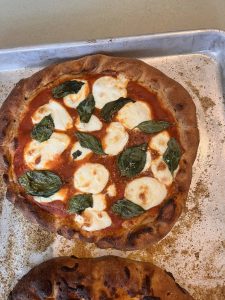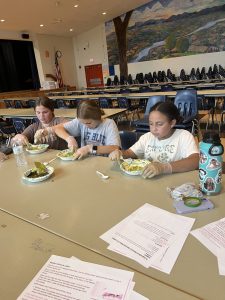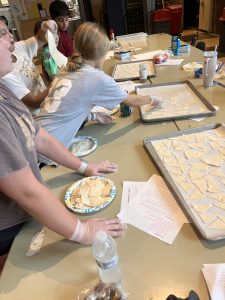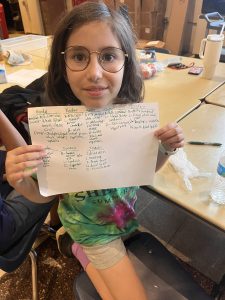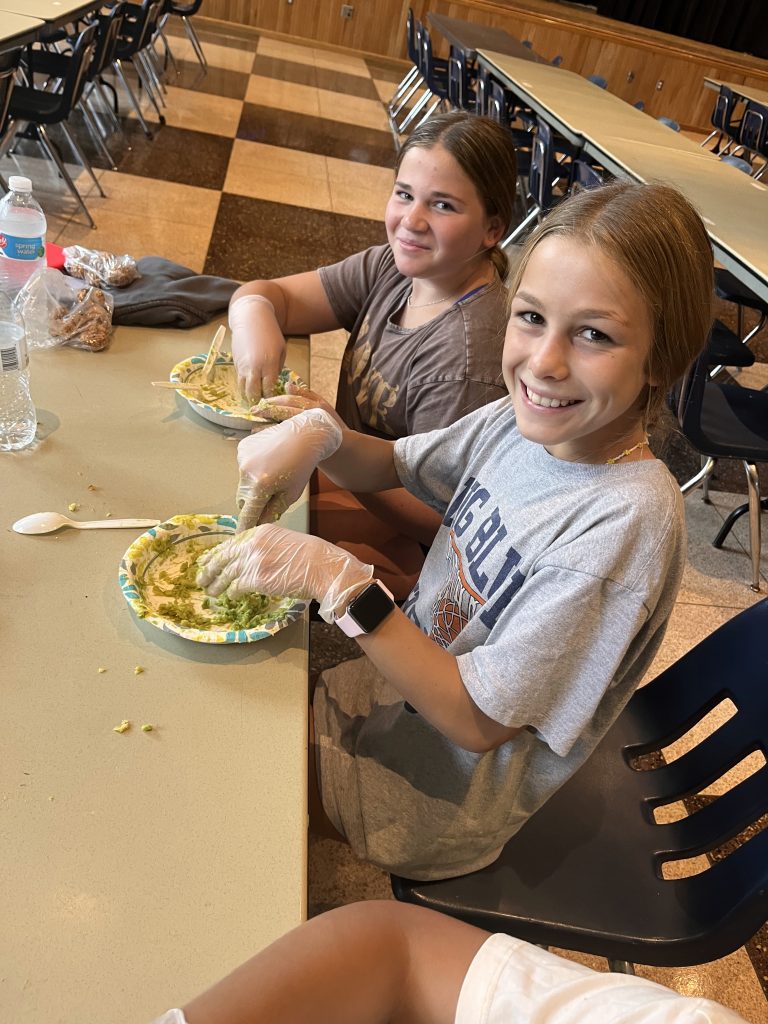According to the CDC, over 20% of adolescents are obese in America. Since entering high school, I’ve been extremely curious about the cause of this significant issue. With expansive research, I have arrived at the conclusion that the lack of knowledge in preparing healthy meals for adolescents is a large contributor towards the high rates of obesity. Home EC and other cooking classes are not required in schools, thus creating a lack of information for students and waterfalling this issue as they mature. To counter this problem, I created and designed two healthy eating workshops to teach adolescents in my community how to cook healthy meals that are appetizing.
Thanks to the generosity of the Deerfield community and the CSGC, I received a grant which paid for the ingredients. To entice younger kids and oppose the stereotypical idea that healthy foods do not taste good, I attempted to make a menu for both the days filled with foods that children love, but with a healthy twist on them. The menu for day one was yogurt parfaits, pizza, and salad. Day two’s menu consisted of banana balls, chips, and burrito bowls with guacamole. At first glance, this menu doesn’t sound healthy. Pizza? Burritos? Chips? However, following the CDC guidelines of a healthy plate filled with fruits, vegetables, protein, and low added sugars, these meals can be deemed healthy according to the definition I found at this link: https://www.cdc.gov/healthyweight/healthy_eating/index.html
In the first class, I taught students the importance of meal planning and timing. In doing so, the students understood why we needed to prepare the dough first thing at 9:00am. Then using whole wheat flour, I explained why dough rises and the important process of fermentation. Thereafter, while the dough was rising, we made homemade granola, washed the fruit, and put together the yogurt parfaits. In this process, students learned about the availability of produce in our farm community. Students excitedly discussed blueberry picking, strawberry picking, pumpkin picking, and apple picking. While making the salad with fresh local vegetables, students additionally learned about the importance of washing produce. Finally, we put the pizza together using fresh mozzarella, basil, and tomatoes. Students learned how easy it is to make these meals and were excited to bring the recipes home to cook them again in the future!
In the second class, we learned about food safety and improvising in cooking. To begin the day, we marinated the chicken. Students discussed bacteria, salmonella, and the importance of being extremely careful while handling raw meat or poultry. After marinating the chicken, we moved on to making banana oat balls. Using only three ingredients (oats, bananas, and raisins), students saw how easy and fun it is to prepare a healthy, homemade snack. We had a little bit of time in between snack and lunch, so we took a break and planned hypothetical meals for the week. I had students create a list of what meal they would have for breakfast, lunch, and dinner. Students were surprised at the difficulty of this task and wondered how their parents were able to do this every week. I enjoyed how healthy and creative the meals were that students came up with. Some examples of healthy meals that students came up with were tofu and couscous, eggplant parmesan, and cauliflower pizza. Shortly after this assignment, students cut whole wheat tortillas into smaller triangles, which then were crisped in the oven into chips. While the chips were in the oven, students made their guacamole. Using lime, lemon, tomatoes, cilantro, cumin, salt, and pepper, students were able to experiment with the different seasonings and improvise to create their own guacamole recipe to their liking. One student even realized that they liked to add tomato juice and seeds into their guacamole, which brought up the important lesson of creating as little food waste as possible. We then cooked the chicken on the stove, teaching students how to check the temperature of meat and poultry, and that the proper temperature for chicken to be cooked is at least 165 degrees. We also cooked long grain rice on the stove. Once the meal was served, students who attended the first session commented that they surprisingly liked the chicken, rice, guacamole, tomatoes, and homemade chips more than the pizza, but that it was more fun to create the pizza.
I hope that these healthy cooking classes have taught the students that eating healthy doesn’t just mean eating salad and beans every day. There are lots of different ways to eat healthy, which students showed they learned through the meal plans they created. Aiming to combat the lack of information relating to food intake and preparation for adolescents, I feel confident in concluding that the students that attended have expanded upon their knowledge of cooking, food safety, meal planning, and making good diet choices.
In the future, I hope to offer more cooking classes and craft a cookbook consisting of simple healthy meals for families to make together. Thank you to Hopkins Academy for allowing me to use the kitchen and for always providing a space for learning outside of designated school hours. A special thank you to Tanner for generously lending a helping hand during the classes, guiding me around an unfamiliar kitchen, and for being an extremely caring person. And finally, thank you so much to the CSGC for this grant, the students and I really appreciate it and have learned so much!
-Anna ’24




